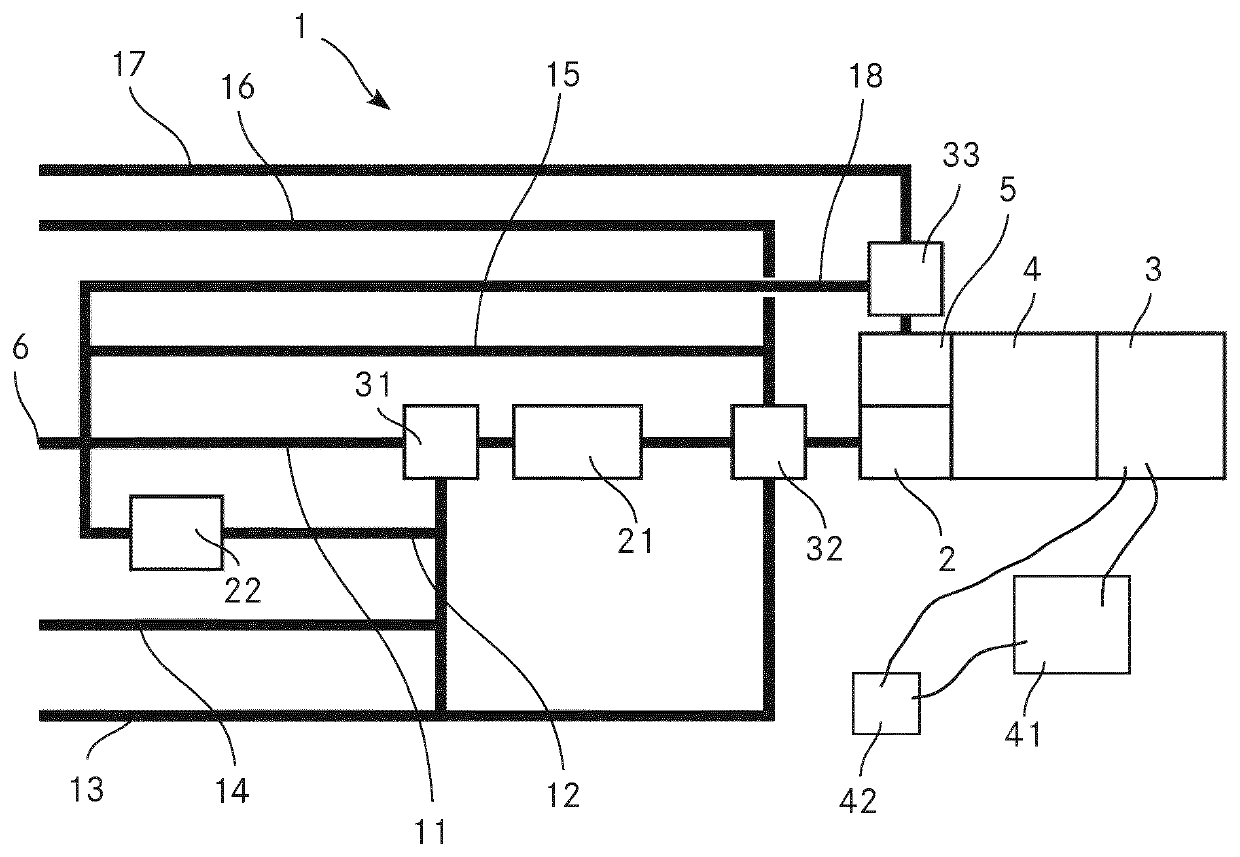Apparatus and method for analysing a chemical composition of aerosol particles
a technology of aerosol particles and apparatus, which is applied in the field of apparatus and a method for analysing the chemical composition of aerosol particles, can solve the problems of large aerosol particles larger than 10 m, need a high vacuum, and eventually fall to the ground, and achieve the effect of better identification of metal conten
- Summary
- Abstract
- Description
- Claims
- Application Information
AI Technical Summary
Benefits of technology
Problems solved by technology
Method used
Image
Examples
Embodiment Construction
[0077]FIG. 1 shows a schematic view of an apparatus 1 according to the invention for analysing a chemical composition of aerosol particles. The method according to the invention for analysing a chemical composition of aerosol particles is explained in the context of the same FIGURE.
[0078]The apparatus 1 comprises an extractive electronspray ionisation source 2 and a mass analyser 3 in the form of a time of flight (TOF) mass analyser. The apparatus 1 further comprises a second ionisation source 5 in the form of a spark discharge ionisation source. This second ionisation source 5 is parallel connected to the EESI source 2. The mass analyser 3 is fluidly coupled to the EESI source 2 and to the second ionisation source 5 via an interface 4 in order to analyse ions produced by the EESI source 2 and ions produced by the second ionisation source 5.
[0079]The apparatus 1 comprises a switchable valve fluidly connected to the EESI source 2 and the second ionisation source 5, wherein the switch...
PUM
| Property | Measurement | Unit |
|---|---|---|
| size | aaaaa | aaaaa |
| size ratio | aaaaa | aaaaa |
| size | aaaaa | aaaaa |
Abstract
Description
Claims
Application Information
 Login to view more
Login to view more - R&D Engineer
- R&D Manager
- IP Professional
- Industry Leading Data Capabilities
- Powerful AI technology
- Patent DNA Extraction
Browse by: Latest US Patents, China's latest patents, Technical Efficacy Thesaurus, Application Domain, Technology Topic.
© 2024 PatSnap. All rights reserved.Legal|Privacy policy|Modern Slavery Act Transparency Statement|Sitemap

